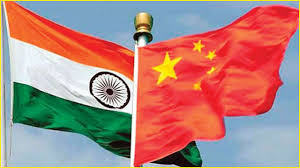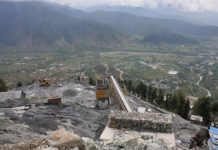Monitoring Desk
At least 20 members of India army including a Colonel have been killed in a “violent face-off” with Chinese soldiers on their disputed Himalayan border, raising tensions in the already volatile South Asian region.
The deaths are the first loss of life in the border area in at least 45 years, and come amid a renewed dispute between the two countries in recent weeks, according to media reports.
Initially, Indian army had confirmed the loss of three army men including a colonel but later the number of casualties were revised upward to 20.
Indian and Chinese soldiers, who often do not carry weapons in the area to avoid escalating conflicts, have brawled, detained each other and deployed forces and equipment in the western Himalayas during the last two months.
“During the de-escalation process under way in the Galwan Valley, a violent face-off took place yesterday [Monday] night with casualties on both sides,” the Indian army said in a statement on Tuesday afternoon .
It said “senior military officials of the two sides are currently meeting at the venue to defuse the situation”.
20 Indian soldiers killed in clash with China’s PLA at Galwan Valley in Eastern Ladakh#IndiaChinaFaceOff #IndianArmy #chinaindiaborder #GalwanValley #ChinaIndiaFaceoff #LadakhBorder #IndiaChinaBorder https://t.co/EbRP3lsXnp
— The English Post (@thenglishpost) June 16, 2020
Tensions between the two sides had been escalating since late April.
A violent altercation broke out between the two sides, with stones and wooden rods used as weapons, though no shots were fired. It has been reported by Indian media, but not confirmed by Chinese officials, that at least seven Chinese soldiers were also killed.
The two countries have been locked in a decades-long stalemate over their competing claims to long, uninhabited stretches of the mountain range. China claims more than 90,000 sq km in the eastern Himalayas disputed by Delhi and another 38,000 sq km in the west.
The neighbours fought a full-scale war in the area in 1962, and tensions have flared into armed confrontations several times since, including in 2013 and again four years later at Doklam near India-Bhutan border.
A statement by the Indian Ministry of External Affairs placed the blame firmly on China, stating that China had “departed from the consensus to respect the Line of Actual Control (LAC) in the Galwan valley” and that as a result “on 15 June, 2020, a violent face-off happened as a result of an attempt by the Chinese side to unilaterally change the status quo there.
“Both sides suffered casualties that could have been avoided had the agreement at the high level been scrupulously followed by the Chinese side,” added the statement.
Zhang Shuli, the Chinese army’s commander in the western theatre, said in a statement that on Monday evening Indian forces had crossed the “control line [and] deliberately launched provocative attacks causing both sides to engage in intense physical conflict that resulted in casualties”.
He said the incursion was in breach of agreements and understandings between the two sides and “hurt the feelings of the people” in both countries.
“We call on the Indian side to restrict its frontline soldiers, immediately stop all infringement of rights and provocative actions against China and return to using dialogue to resolve disputes,” Zhang said.















